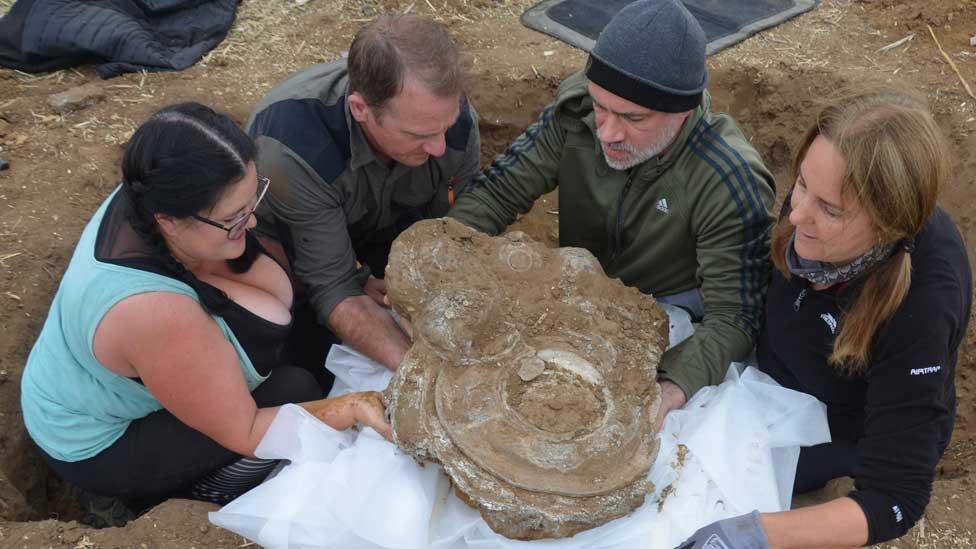Bury St Edmunds Christmas token found at Oxburgh Estate
- Published
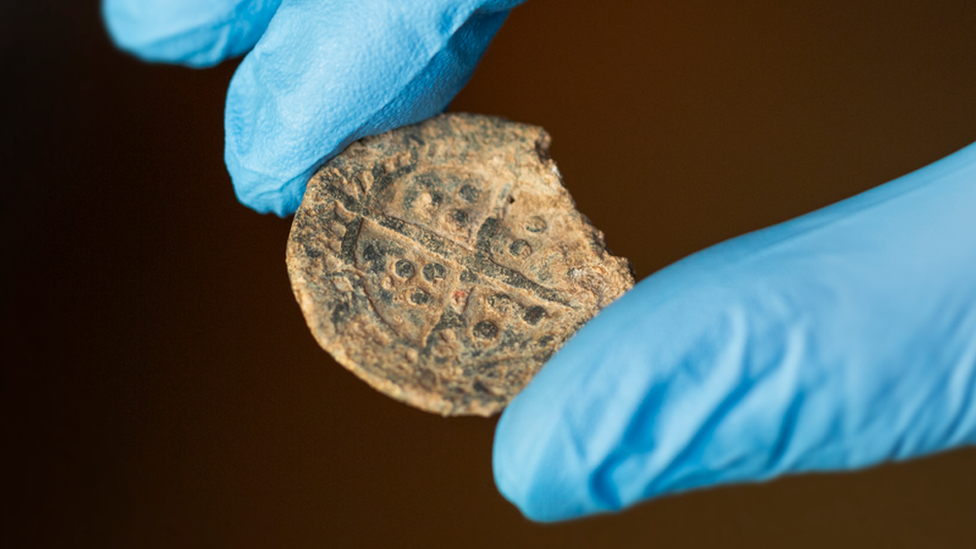
The medieval token is believed to be between 463 and 553 years old
Archaeologists have discovered a token that would have been used to buy food at Christmas about 500 years ago.
Believed to be from Bury St Edmunds Abbey in Suffolk, it was found about 30 miles (48km) away at the Oxburgh Estate, Norfolk.
In the medieval era, a Boy Bishop would hand out tokens to the poor to spend on food at the church over Christmas.
The National Trust said its discovery may indicate the distance people travelled for festive celebrations.
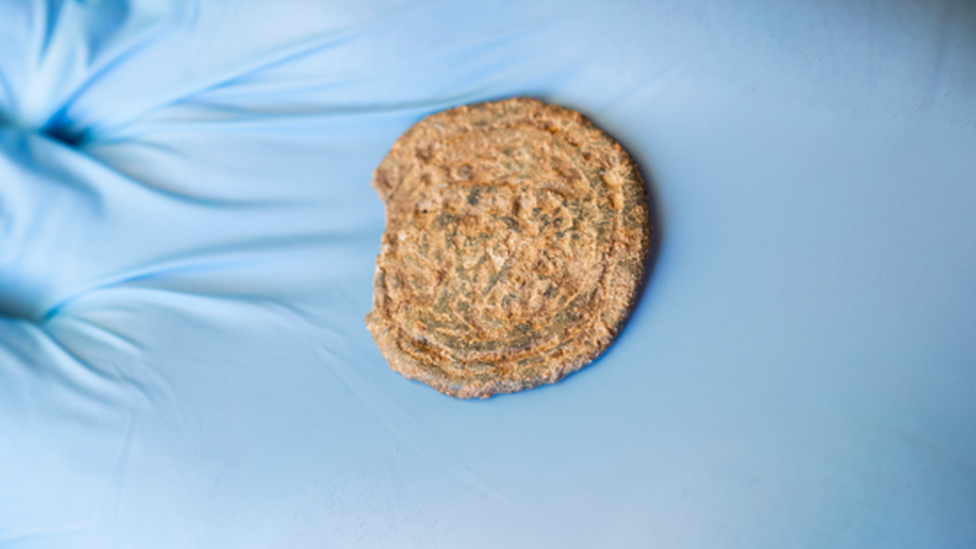
One side of the token depicts a cross, while the reverse side is very corroded
The token was found during an archaeological survey in West Park at the estate, near Swaffham, and dates from between 1470 and 1560.
"We believe that one of the inhabitants from Oxborough village must have made the long trip to Bury St Edmunds to see the festive ceremonies in the massive Abbey Church, where they may have acquired the token," said archaeologist Angus Wainwright.
"This discovery shows how rich the cultural life of even the poorest folk could be in the Middle Ages."
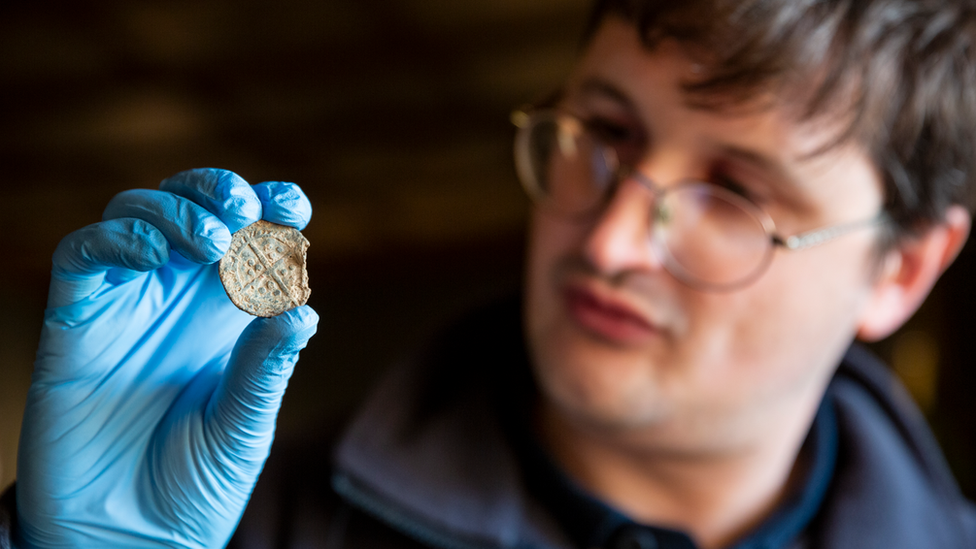
The token is the size of a groat, which would have measured around 26mm (1in) in diameter
During the Middle Ages and early Tudor era, a Boy Bishop was a local choirboy chosen to parody the adult bishop.
They handed out tokens that could be spent during the period between the Feast Day of St Nicholas, on 6 December, and Holy Innocents Day, 28 December.
"Although tokens could be spent in the local town, they may also have been kept as keepsakes, but the one we have found could also simply have been dropped and lost," Mr Wainwright said.
The tokens came in equivalent sizes to a penny, half-penny and groat - a former British coin worth fourth pennies - but had no real monetary value.
The National Trust said the token found on the Oxburgh Estate was the size of a groat, depicting a long cross on one well-preserved side.
The reverse was very corroded but probably would have shown the head of a bishop representing St Nicholas.

Follow East of England news on Facebook, external, Instagram, external and Twitter, external. Got a story? Email eastofenglandnews@bbc.co.uk , externalor WhatsApp 0800 169 1830
Related topics
- Published3 December 2023

- Published23 November 2023
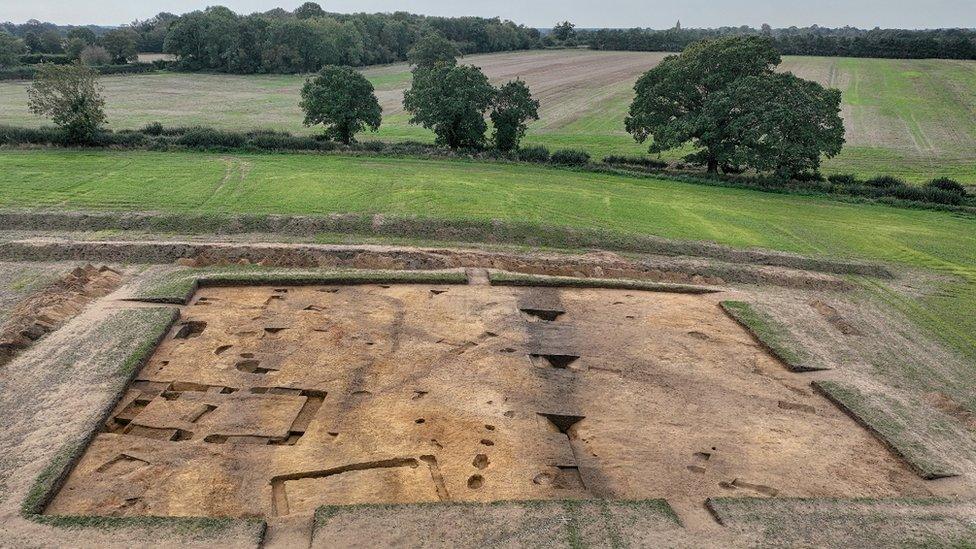
- Published29 June 2023
